Color Database
KASK biolab contextualizes color in contemporary art and design questioning its related environmental issues. This proposal identifies the environmental impact of the color industry and envisions the shift towards a sustainable approach in color.
Here you can find a list of coloring materials used in the laboratory.
Pheomelanin

Type of melanin. Yellow-reddish pigment distributed in animals. It is responsible for the red hair in mammals and some red feathers.
Eumelanin
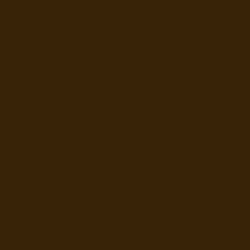
The most common type of melanin. widely distributed in animals. Responsible for the brown-black colours of hair, eyes and skin. It is involved in the creation of structural coloration in some animals. It protects against the UV radiation.
Allomelanin

Type of melanin. Brown-black pigment found in fungi. It is responsible for the high resistance of fungi to radiation as space and nuclear radiation.
Chlorociboria aeruginascens

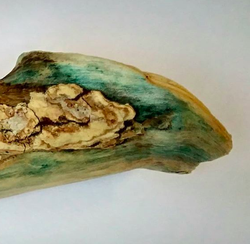
Small green-blue mushroom with a turquoise mycelium. It is able to change the color of the wood that infects, making it a valuable material for decorative woodworking (green oak).
Type: Fungi Color: blue-green Pigment production: xylindein Growing conditions: forest on decaying wood Applications tested: wood
Bradyrhizobium sp

Gram(-) soil bacteria which may live in symbiosis in the roots of leguminous plants. It takes atmospheric nitrogen and fixes it into ammonia. The nitrogen not used for the plant enriches the soil.
Type: bacteria Color: yellow colonies Pigment production: -- Growing conditions: nutrient agar Applications tested: --
Streptococcus agalactiae

Gram (+) aerobic bacteria, facultative anaerobe.Commensal bacteria of human and animal microbiota.
Type: bacteria
Color: red/orange
Pigment production: Granadaene
Growing conditions: Nutrient agar +glycerol
Applications tested: --
Alchemilla mollis
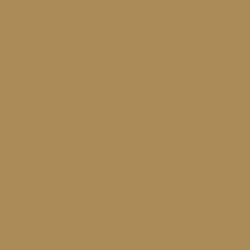
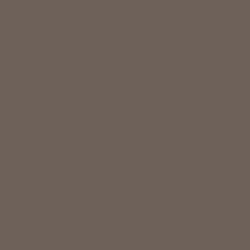

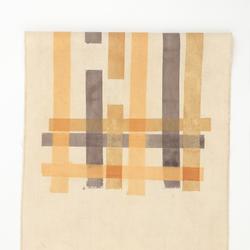
Known as Lady’s mantle, it flowers from May to September with small, yellow-green, chartreuse colors. It grows in a wide range of habitats from stream banks to meadows and wind-swept plains and mountainous areas.
Type: flower
Color: mustardy yellows, brownish green
Part: leaves and flowers
Applications tested: dyed cotton
Mordants: alum, iron, titane
Alkanna tinctoria

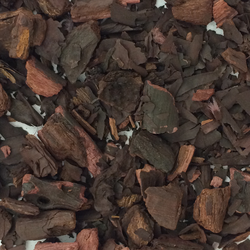
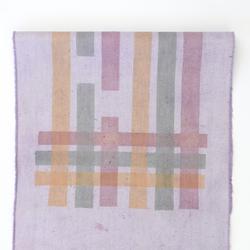
Alkanna tinctoria is a small, soft hairy perennial herb growing between 20 till 30 cm height, flowering from June to July with little blue flowers and grey-green leaves. A red color is obtained from the roots. It is used by pharmacists as well as in perfumes and to stain wood or marble. The dye is also used in thermometers and as a litmus to test for acids and alkalines. It can make wood look like rosewood or mahogany.
Type: herb Color: purple and lavender Part: roots Applications tested: dyed cotton Mordants: alum, iron, titane
Berberis aristata
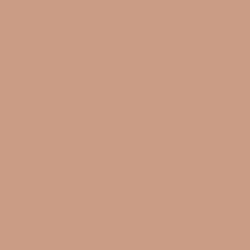
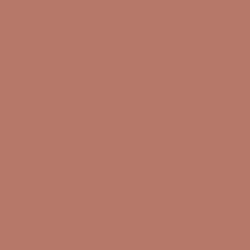

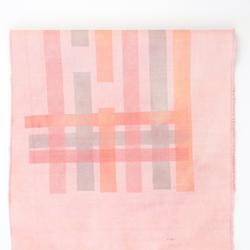
A spiny bush, ranging between 2 and 3 meters in height. It has a cluster of yellow flowers in spring (mid-March/ April) and red to plum-colored bean-shape berries (May /June). The genus Berberis has an important place in various traditional systems of medicine worldwide for their medicinal properties.
Type: bush Color: yellow Part: roots, stem Applications tested: dyed cotton Mordants: alum, iron, titane
Betula pendula
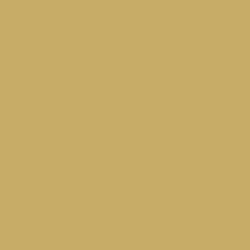
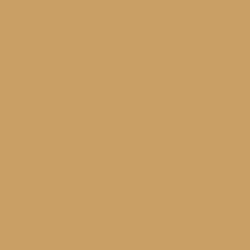
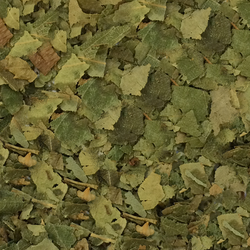

Birch is a fast-growing tree with a white-colored bark. Twenty meters height growing catkin flower cluster (= fruiting body) in early spring. Birch is often called a 'pioneer' species, one of the first trees to occupy any suitable ground.
Type: tree Color: brown Part: inner bark, leaves Applications tested: dyed cotton Mordants: alum, iron, titane
Cladonia genus

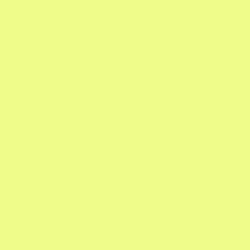
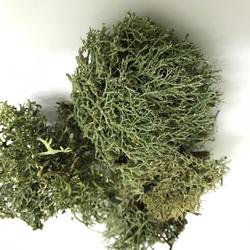
Pale green moss-lichen. They are the primary food source for reindeer and caribou, that’s why the economic importance to reindeer-herders of Russia and Scandinavia.
Type: lichen Color: yellow, green Part: whole Applications tested: wool Mordants: none
Cosmos sulphureus
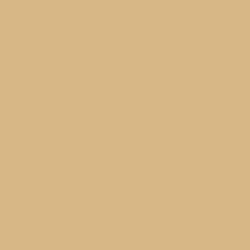

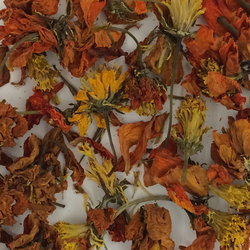
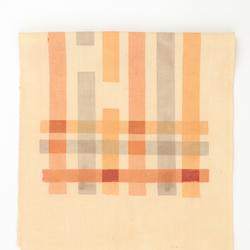
Cosmos sulphureus is a prolific seed-producing annual herb. It grows to 2 meters tall with yellow flowers from May until November. The species name sulphureus is a reference to the orange-yellow colors of the plant’s flower.
Type: flower Color: yellow, orange Part: flowers Applications tested: dyed cotton Mordants: alum, iron, titane
Dactylopius coccus
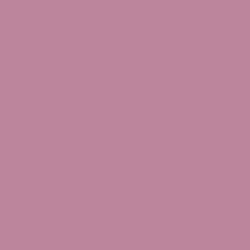
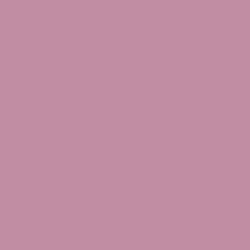
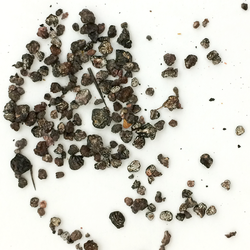

Cochineal is an oval insect that grows on cactus recovered by a white wax to protect itself from sun and water loss. Used by Mayas and Aztecs is exported to Europe by the Spanish as an expensive red dye, responsible to a great extent of its imperial economy. Once the synthetic colors appeared, the use and value of this material decreased.
Type: insect Color: red Part: whole insect Applications tested: dyed cotton Mordants: alum, iron, titane
Equisetum arvense
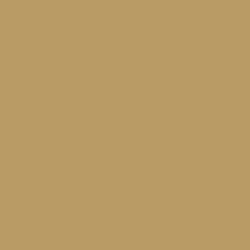
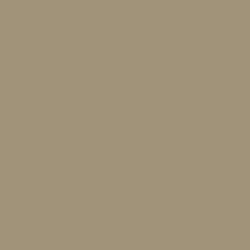
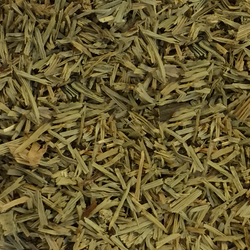
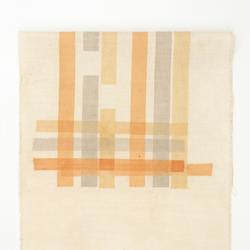
A prolific weed/plant with fat clusters in green ‘horse-tail’ shapes. It reproduces itself not by seeds but with spores (these spores are using ‘legs’ to walk and jump). It grows in wet places such as moist woods, ditches or wetlands.
Type: weed Color: yellow Part: leaves Applications tested: dyed cotton Mordants: alum, iron, titane
Evernia prunastri
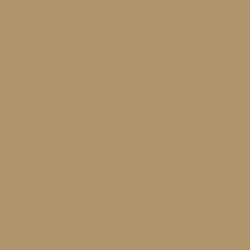
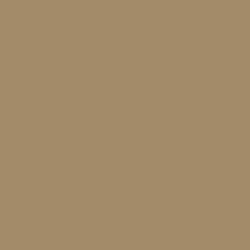

Green lichen with a “fork” shape. The color on top is green and white on the bottom. Evernia is abundant on branches and twigs of trees (oak, fir, pine) and bushes in the countryside. Sensitive to air pollution, it is usually found in clean air environments.
Type: lichen Color: orange, green, red-pink Part: whole Applications tested: wool Mordants: none
Frangula alnus or Rhamnus frangula
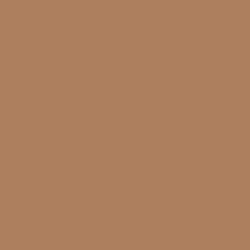
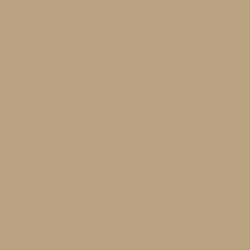
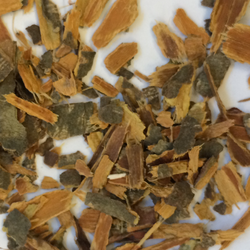
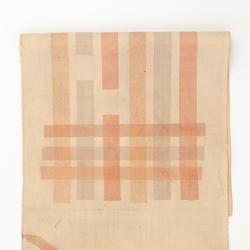
Buckthorn is a large, slow-growing bush that reaches up to 5 meters in height with small red berries in the spring that become black when ripe. Traditionally, the wood has been used for making nails, shoe lasts and charcoal to manufacture gunpowder.
Type: bush
Color: mustard yellow / brick or cinnamon red
Part: bark, leaves, fruit
Applications tested: dyed cotton
Mordants: alum, iron, titane
Genista tinctoria
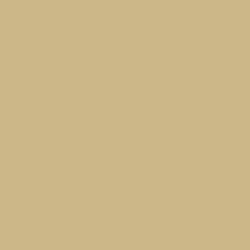

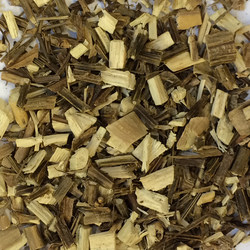
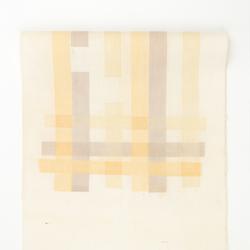
A perennial herbaceous plant that grows until 1,5m height with yellow flowers. Dyers’ greenweed contains luteolin, the same water-fast pigment as weld.
Type: herbaceous plant Color: clear yellows Part: whole plant Applications tested: Dye cotton Mordants: Alum, Iron, Titane
Haematoxylon campechianum


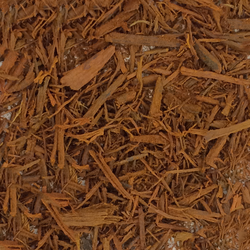
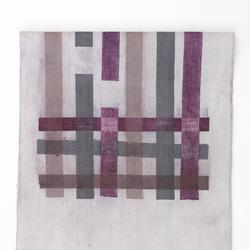
Logwood is a small spiny tree, height: 9-15 m, short trunk irregularly fluted and contorted. Discovered by the Spanish and was exported to Europe as an important source for dye: black and purple textile dye from the 16th cent. The generic name of logwood Haematoxylum (often spelled Haematoxylon) means bloodwood, referring to the dark red heartwood.
Type: tree Color: purple, red and black Part: wood Applications tested: dyed cotton Mordants: alum, iron, titane
Maclura tinctora
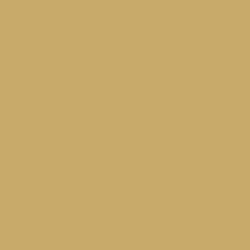
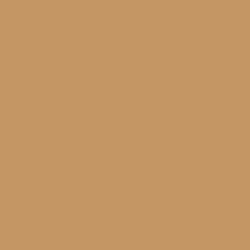
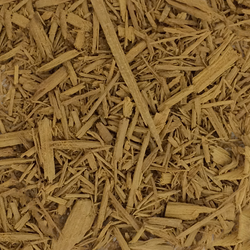
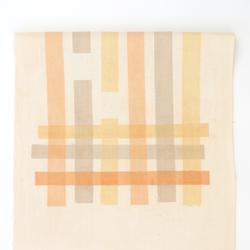
Old fustic has been used to produce an intense color at a low cost. During the WW1, fustic was one of the dyes used to obtain khaki for army uniforms. Fustic is a dye which contains the flavonoid morin, a yellow chemical compound.
Type: tree Color: yellow, khaki Part: wood Applications tested: dyed cotton Mordants: alum, iron, titane
Nannochloropsis sp
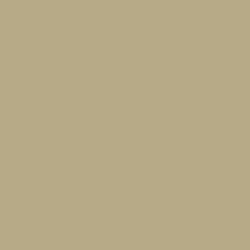
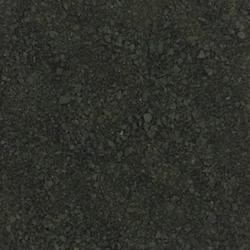
Nannochloropsis genus is distributed worldwide in marine, fresh, and brackish waters. Apart from a high-fat content, Nannochloropsis has been proposed as a pigment source of chlorophyll, zeaxanthin, canthaxanthin and astaxanthin.
Type: microalga Color: grass green Pigments: chlorophylls Applications tested: printed cotton Mordants: --
Parastrephia lucida

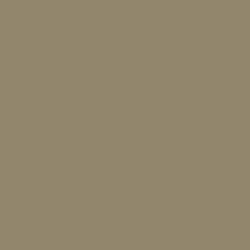


This plant grows in the pre-cordillera and Altiplano in the North of Chile and Argentina. It is a resinous shrub that reaches a height of up to 2 m.
Type: bush Color: green, yellow Part: branch Applications tested: dyed cotton Mordants: alum, iron, titane
Parmelia and Flavoparmelia genus

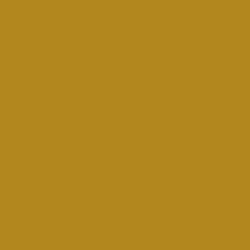
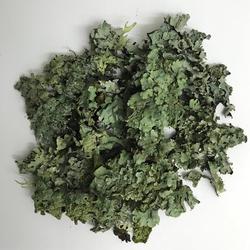
Pale grey-blue to apple green lichen that grows on a wide range of surfaces. It has a wrinkled surface with powdery spots. It grows in both polluted and clean air environments.
Type: lichen Color: green, browns, reds Part: whole Applications tested: wool Mordants: none
Persea americana
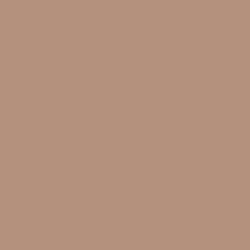
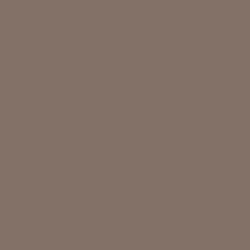
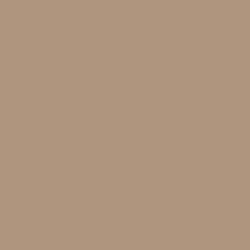
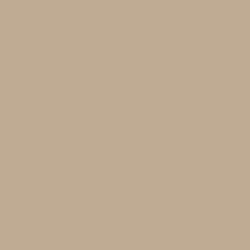
The skins and pits of an avocado can be used to dye different hues of pink. The pinkest tones are produced from the pits.
Type: fruit Color: pale pink Part: skin, pit Applications tested: dyed cotton Mordants: alum, iron, titane
Reseda luteola
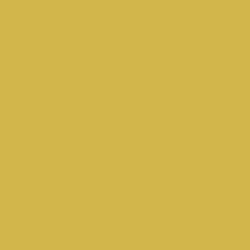
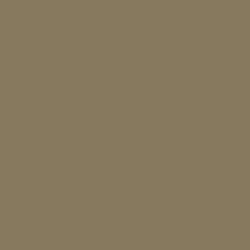
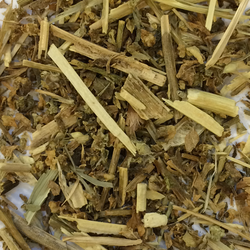
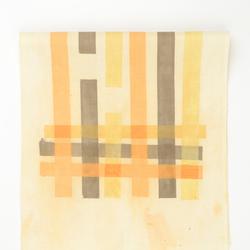
A self-fertile biennial plant, 1.5m height with extremely fragrant bright yellow flowers. The substance luteolin produces a clear and intense yellow and is present in all the green parts of the plant. Compared to other plant sources for yellow available to the home dyer, the weld is very concentrated.
Type: weed Color: lemon yellow Part: seeds Applications tested: dyed cotton Mordants: alum, iron, titane
Rubia tinctorum
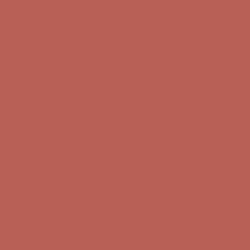
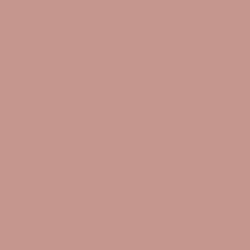
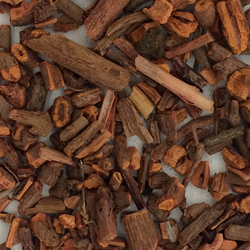
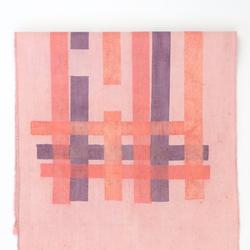
Madder root is one of the oldest natural dyes and has been used for many centuries in Turkey, Iran, India, South Asia, Greece, Italy and Egypte. The name comes from the Latin: herba radice rubia, the plant with the red roots Madder is an evergreen perennial, growing to 70 till 100 cm height with yellow-green flowers during summer.
Type: tree Color: brown Part: inner bark, leaves Applications tested: dyed cotton Mordants: alum, iron, titane
Sambucus nigra


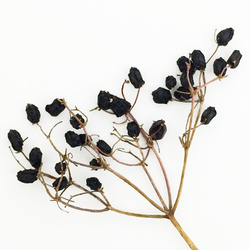
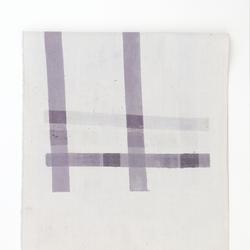
Elderberry is a fast-growing bush or small tree, 8-10 meters’ height. Sambucus nigra is often utilized as valuable fruit and flower crop It is a source of anthocyanin food colorant.
Type: tree Color: lilac blue and violet, green, black Part: fruit, leaves, bark Applications tested: dyed cotton Mordants: alum, iron, titane
Senegalia catechu
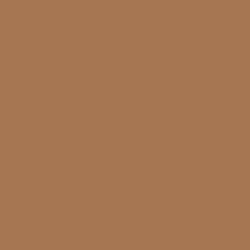
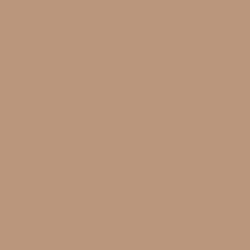

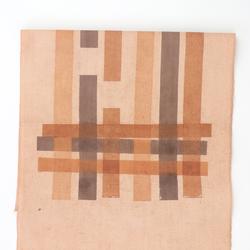
Deciduous, gregarious trees, height: up to 15m. Bark dark greyish-brown to dark brown, rough, about 1.3 cm thick. Bold branches and pinnate leaves compound with 9-30 pairs of pinnae, leaflets around 16-50 pairs per and white to pale yellow flowers. It is solid, hard, durable wood and not attacked by white ants or teredos. The wood is excellent firewood and one of the best materials for charcoal. Catechu extract is also used for preserving fishing nets and ropes.
Type: tree Color: yellow, brown, olive green and khaki Part: wood Applications tested: dyed cotton Mordants: alum, iron, titane
Solidago virgaurea


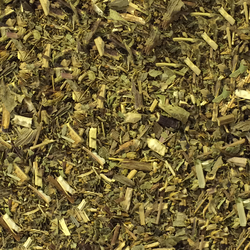
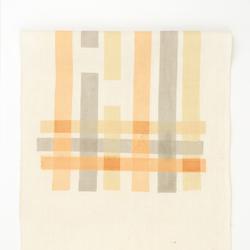
It is known as goldenrod and it produces arrays of numerous small yellow flower heads at the top of the stem.The generic name Solidago is derived from the Latin word "solidare", which means "to make" of "merging". Formerly used men's goldenrod as a wound medicine and as a remedy against all kinds of kidney diseases. The addition "virga" means "thin, green branch" and "aurea" (gold)
Type: herbaceous plant Color: mustard, orange and brown/ gold yellow Part: stem, leaves, flowers Applications tested: dyed cotton Mordants: alum, iron, titane
Sophora japonica
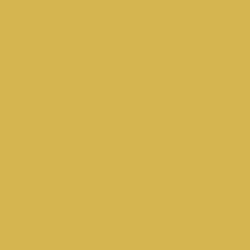
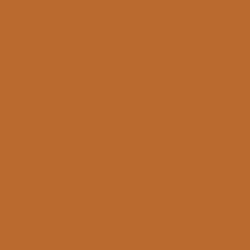
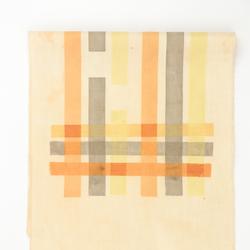
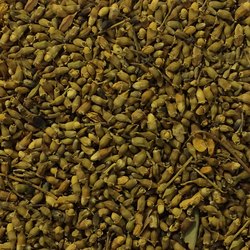
A medium to large tree (around 30m high), the spread equals height in a rounded shape. Pale yellow to creamy white pea-like fragrant flowers appear every year in August. In China and Vietnam, this dye was only used to color silk, embroidery thread and hat tassels, but not for other materials because of the number of flower buds needed to prepare a dye-bath.
Type: tree Color: yellow / granite-grey Part: unopened flower buds Applications tested: dyed cotton Mordants: alum, iron, titane
Streptomyces coelicolor


Soil bacteria responsible for organic material degradation. It has a similar structure and life cycle than fungi, including spores formation. Actinorhodin production is pH-dependent, blue/green in an alkali environment and red in acidic mediums.
Type: bacteria Color: red, blue Pigemt: actinorhodin Applications tested: silk Mordants: --
Usnea genus
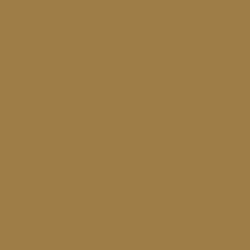
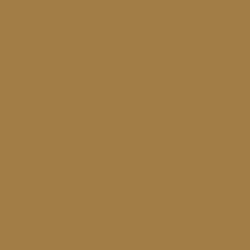
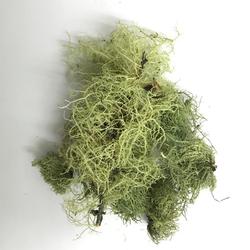
Grey-green lichen that hangs from the tree branches. It looks like a mini-bush without leaves. It is distributed all over the world. It grows on trees (conifers and non-conifers), especially in mountains and wet old forests. Sensitive to air pollution is usually found in clean air environments. Usnic acid has been traditionally used in medicine as an antibiotic.
Type: lichen Color: green, browns, reds Part: whole Applications tested: wool Mordants: none
Xanthoria parietina


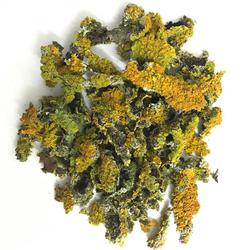
Yellow, orange, or greenish-yellow lobes, while the lower surface is white. It is widely distributed in forests and near the coast. It may grow on tree barks or rocks, in environments with high nitrogen content. Due to its high resistance to pollution, it has been used as a biomonitor of levels of toxic elements. In the past, Xanthoria parietina was used to treat malaria as a substitute for the cinchona bark.
Type: lichen Color: yellow, pink, blue Part: whole Applications tested: wool Mordants: none
Arctostaphylos uva-ursi
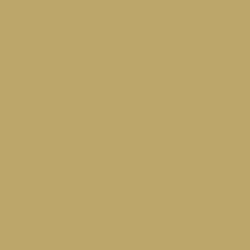
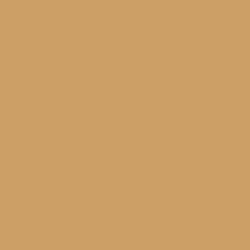
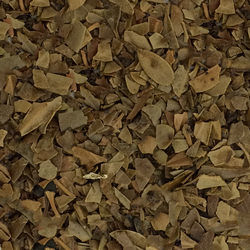

Leaves of bearberry are rich in tannins and have been used in the process of tanning hides/leather. Leaves are used to get a yellow/brown and the fruit to get a grey/brown color.
Type: woody evergreen shrub Color: yellow, grey, brown Part: leaves, fruit Applications tested: dyed cotton Mordants: alum, iron, titane
Microchaete diplosiphon


Microchaete diplosiphon is a cyanobacterium known for its chromatic adaptation: it can adjust photosynthetic receptors depending on the light and to present a green or red color.
Type: Bacteria Color: red, green Pigment production: chlorophyll Growing conditions: BG11 medium Applications tested: --
Bolinus brandaris

Bolinus brandaris is a marine gastropod mollusk originally known as Murex brandaris. The main characteristic is the production of mucous secretion in the hypobranchial gland that has been extensively used as a long-lasting dyeing substance. The color obtained is known as Tyrian purple.
Used from pre-Roman times, the significant amount of mollusk needed for a little amount of dye made this color a luxury trade, becoming the color for royalty. One of the most important habitats for Bolinus brandaris is the Mediterranean Sea, where it is commonly consumed as food.
The principal responsible for this color is the 6,6’-dibromoindigo. In its shellfish, a transparent substance reacts with the enzyme arylsulfatase. This enzyme generates hydrolyzed compounds that are susceptible to oxidative and photochemical reactions in contact with sunlight. The result is a deep purple.
Type: mollusk Color: purple Pigment production: 6,6’-dibromoindigo Growing conditions: sandy-muddy to detritic environments Applications tested: paper, fabric
Chlorella vulgaris

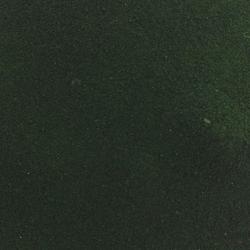
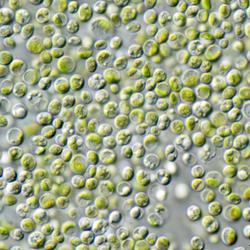
Freshwater unicellular green microalgae. It is used as a food supplement because it is high in proteins, lipids and other essential nutrients. These round-shaped microalgae multiply rapidly through photosynthesis. High chlorophyll content.
Type: microalgae Color: blue/green Pigment production: chlorophyll, phycocyanin Growing conditions: fresh water medium Applications tested: paper, fabric
Dunaliella Salina

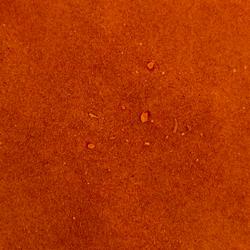
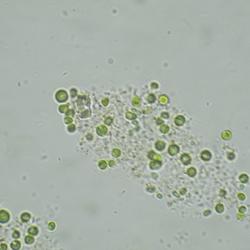
Dunaliella salina is a green microalga that under certain conditions is able to modify its color by carotene production, being responsible for red/pink-colored lakes such as Hillier Lake in Australia or Retba Lake in Senegal.
Type: microalgae Color: green/red/orange Pigment production: carotenes Growing conditions: marine medium Applications tested: paper, fabric
Fucus vesiculosus
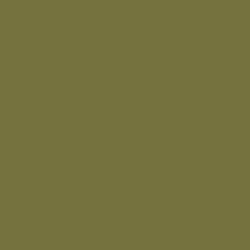
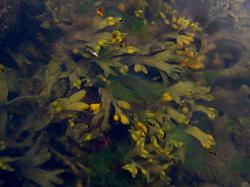
Brown alga which habitat is the intertidal zones of seashores. Worldwide distributed. Because of the sodium carbonate, it has been used as soda ash and fertilizer.
Type: brown algae Color: brown Pigment production: fucoxanthin Growing conditions: seashores habitat Applications tested: paper Picture by Kristian Peters
Haematococcus pluvialis

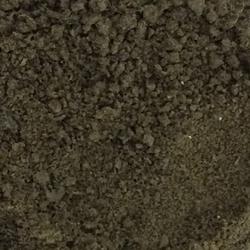
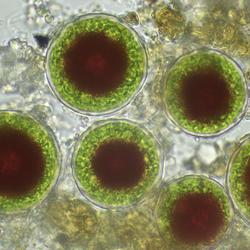
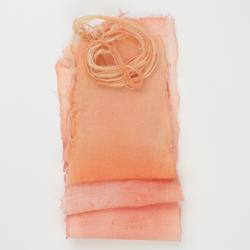
Haematococcus pluvialis is a freshwater microalga able to produce astaxanthin as a protection element under certain conditions such as the lack of nutrients, intense bright light or high salinity. The red appearance of lakes and ponds is because of this microalga.
Type: microalgae Color: green/red Pigment production: astaxanthin Growing conditions: freshwater medium Applications tested: paper/ synthetic Haematococcus pluvialis pigment on wool
Isochrysis galbana

Marine microalgae used in aquaculture to feed mollusks and crustaceans.
Type: microalgae Color: brown, orange Pigment production: fucoxanthin Growing conditions: marine medium Applications tested: paper
Janthinobacterium lividum

Gram (-) bacteria that produces violacein, a purple compound with anti-bacterial, anti-viral and anti-fungal properties.
Type: bacteria Color: purple Pigment production: violacein Growing conditions: LB medium +glycerol Applications tested: paper, fabric
Physarum polycephalum

Slime mold that grows in dark and wet environments. The physarochrome A pigment is the responsible for the yellow color.
Type: Mycetozoa Color: yellow Pigment production: physarochrome A Growing conditions: wet dark enviroment Applications tested: paper, fabric
Porphyridium purpureum

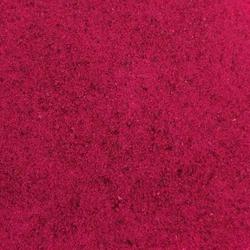
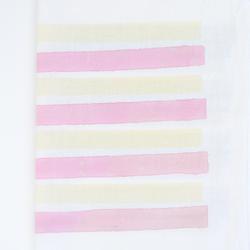
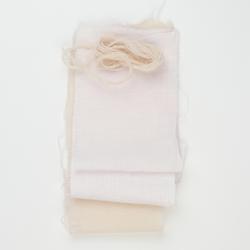
Porphyridium purpureum is a red marine microalga that contains several pigments including phycocyanin (blue) and phycoerythrin (pink) in their phycobiliproteins. This unicellular round alga, distributed worldwide, is not only interesting for its pigments but also because of the possibilities of being used as biomass for biofuel.
Type: microalgae Color: red/pink Pigment production: phycoerithrin Growing conditions: marine medium Applications tested: paper, fabric
Serratia marcescens

Gram (-) bacteria that produces prodigiosin, a tripyrrole red pigment probably associated with the "blood miracles".
Type: bacteria Color: pink, red Pigment production: prodigiosin Growing conditions: NA Applications tested: paper, fabric
Spirulina

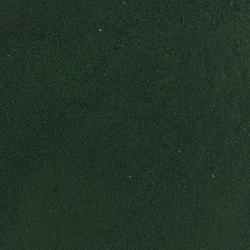

Spirulina is the common name for a food supplement made out of Arthrospira, another genus different to Spirulina with similar morphological structure (the division is from 1989). Spirulina is a cyanobacterium, which means that can photosynthesize. First considered as a green-blue alga, Spirulina is widely distributed in South America, Africa and Asia in lakes with a high pH and carbonate concentration. The most important pigment extracted from spirulina is phycocyanin, responsible for its blue color.
Type: cyanobacteria Color: blue/green Pigment production: phycocyanin, chlorophyll Growing conditions: basic medium Applications tested: paper, fabric, wood
Anthemis tinctoria
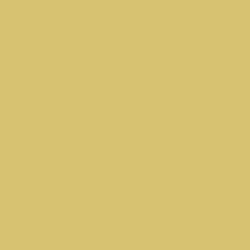
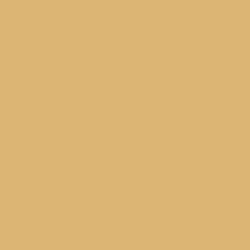
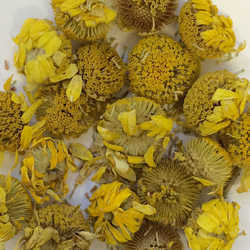

An evergreen biennial or perennial plant to 0.8 m height with daisy-like yellow flowers from July to August. The compounds that give the yellow color are flavonoids and they work better on wool or silk rather than on cotton.
Type: flower Color: warm yellow till green shades Part: flowers Applications tested: dyed cotton Mordants: alum, iron, titane
Hypericum perforatum
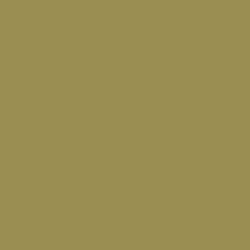
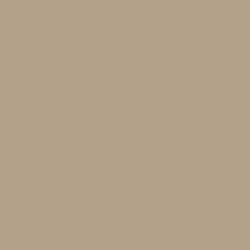
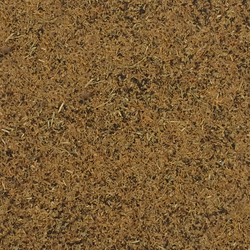

Known as Saint John's wort this plant is worldwide distributed, becoming an invasive weed in some places. Traditionally used as a medicinal herb.
Type: Flowering plant Color: green, orange, brown Part: whole plant Applications tested: Dye cotton Mordants: Alum, Iron, Titane
Microcosmic color
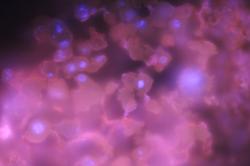
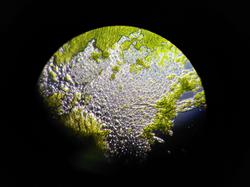


Color is a physical property of light that we can perceive through our eyes. It is transformed by our brain in the form of an experience. The significance of color is different depending on the context. In science, color, and specifically in microscopy, is used to visualize organic and inorganic structures, its presence or absence. However, the aesthetic result is generally dismissed by the viewer. In this proposal, materials and methods of both fields are mixed to distort the information that we get from the images. Color is applied is human cells and plants cells derived from Linum usitatissimum, a plant commonly used to make art canvas. As the coloring source, fluorescence pigments used for cell research and calligraphy pigments were applied. The result is a series of photographs where the scale is questioned by these micro-cosmic images.
This project is a collaboration between the KASK-HoGent and the Center for Microbial Ecology and Technology (CMET, UGent) with the Doctor Marta Calatayud.
Pleurotus
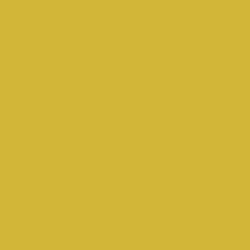

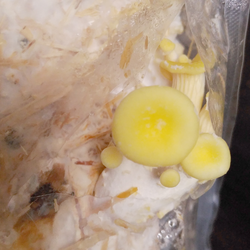
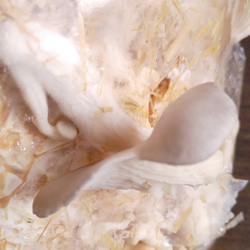
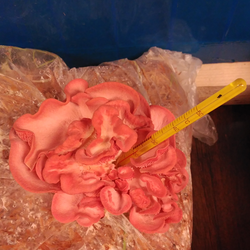
Mushroom genus that can grow in different colors, pink (Pleurotus salmoneo), grey (Pleurotus ostreatus) and yellow (Pleurotus citrinopileatus). They are all edible.
Type: Fungi Color: yellow, grey, pink Pigment production: Growing conditions: mushroom substrate Applications tested: spores on paper
Monochrome
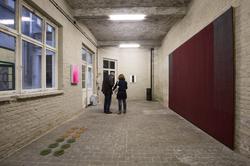
From May 27th to July 31st 2016 Salina has been exhibited at The Société (Brussels) as part of the Monochrome exhibition.
Salina are several monochromatic glass canvasses in green and orange, with colors brought by the same living source, Dunaliella salina.
Salina highlights new color possibilities to be applied in art practice using emerging biotechnology tools as well as questioning issues in this field as stability or ownership: what would our response be to an art piece which state changes autonomously? Could a living entity become a color itself? Salina suggests the viewer new possibilities in color research, and opens new discussions around art and biotechnology.
Neochromologism.io
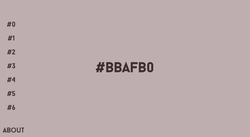


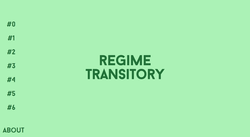
Neochromologism.io is an ongoing artistic website that aims to reflect about the color vocabulary that we are using in our daily lives at both a professional and personal level by establishing connections between a color name and meaning or experience.
The random RGB code generated for the website background is presented as hexadecimal code, a name following the rules shown above and also gives the possibility to the user of naming it by creating a new color database.
This project has been developed by Laboratorium, the experimental lab for art/design and biotechnology at KASK/School of Arts Ghent, as part of the research project “The color biolab” funded by Arts Research Fund of University College Ghent in collaboration with Juan Luis Font, digital alchemy.
